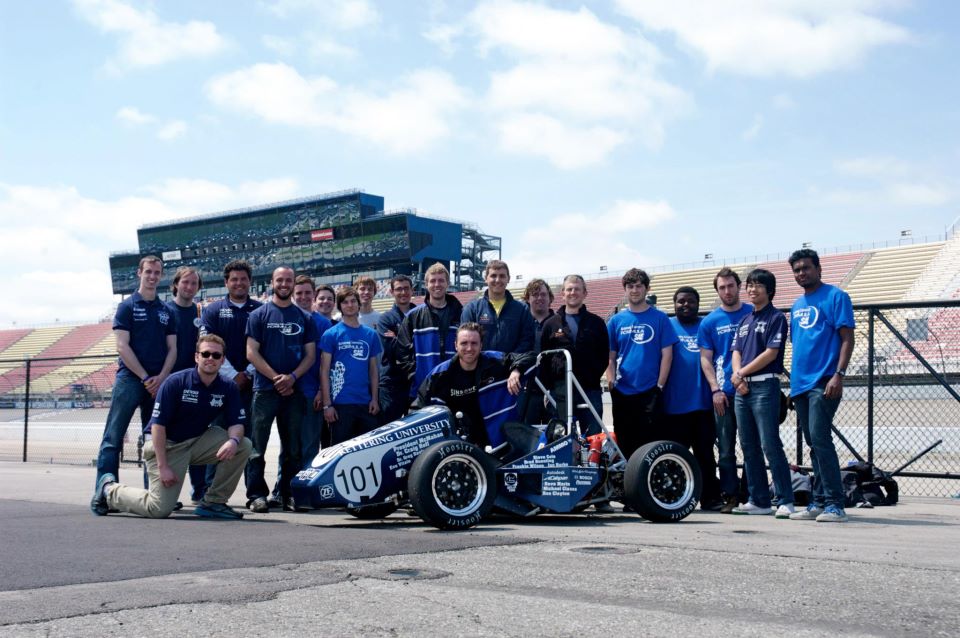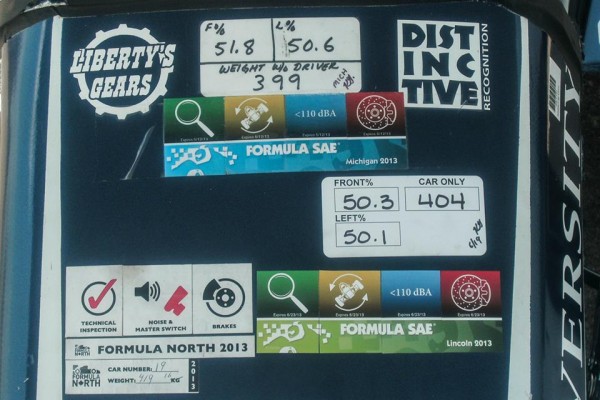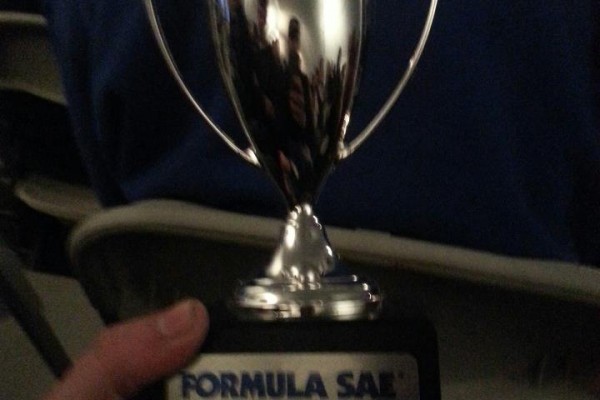Editor’s Note: This is Part 2 of our Campus Pit Stop series of articles highlighting automotive engineering work being done on campuses across America. The series covers some of the schools’ participation in the Formula SAE and Baja SAE programs. For more information on these programs, please see our Campus Pit Stop introduction post.
The Kettering University Formula SAE team never loses focus on the costs of an automotive build.
The automotive engineering students at the Flint, MI-based school understand the average weekend racer has budget limitations. Moreover, these car builders of tomorrow know that production vehicles must always be made with real-world costs in mind.
So, when it comes time to tackle the new season’s Formula SAE build, finding ways to improve performance while simultaneously cutting cost is always the focus.
The Real World
“The premise of the competition, to our team, is to design a car that the average weekend racer can afford to purchase and maintain on his own while getting the best bang for the buck,” said Corbett Ogletree, the Team Leader for Kettering’s Formula SAE team. “For example, if Joe Customer goes out on a Friday for qualifying and puts his car into a barrier, damaging his carbon fiber bodywork or monocoque, it is highly unlikely he will be able to repair it in time to race on Sunday, if it is even repairable.
“For us, the intelligent use of aluminum and steel is the right balance of cost and reliability that one would expect in the market that we believe this competition is trying to hypothetically target.”
All of the members of Kettering’s Formula SAE team are employed by automotive companies as part of a co-op program between the university and prospective employers.
The relationship with the U.S. automotive industry was forged in 1926 when General Motors Corp. bought the university to serve as a night school for in-training GM engineers. While no longer an owner, GM still has a vibrant relationship with Kettering, though students work with a variety of automotive companies.
Ogletree is employed by Ford SVT.
“Because we are all employed at a co-op company, we know firsthand what it’s like to face the classic engineering equation of low cost, high performance, low weight, and reliability,” Ogletree said. “We believe that using exotic materials anywhere that is not absolutely crucial does not follow this mentality.”
Master of Fuel Efficiency
As part of Kettering’s commitment to cutting costs, the team took major steps in 2012-2013 to increasing their vehicle’s fuel efficiency.
The biggest Formula SAE event of the year takes place at Michigan International Speedway. The most recent was this past May. Out of 120 participating teams, Kettering finished in 15th place overall—their best-ever showing at the Michigan event. And they did so on, by Formula SAE standards, a shoestring budget.
Kettering’s major breakthrough for the 2013 season came after switching to a custom engine management software designed by members of the powertrain team.
The precision tune propelled Kettering to 1st place in fuel efficiency at every event in which they competed in 2013.
Ogletree said they might be the most fuel-efficient team in all of Formula SAE worldwide.
The team accomplished the feat while running Michigan-produced E85 gas through a naturally aspirated 450cc single-cylinder Yamaha engine.
The Ideal Stepping Stone
Formula SAE creates the perfect laboratory for these future leaders of the motorsports and automotive industries to gain critical real-world experience.
The relatively small team at Kettering creates unique challenges and opportunities critical to these young engineers and business leaders as they prepare to launch their professional careers.
“Because we historically have been a smaller team, you end up knowing what everyone else is doing almost all of the time,” Ogletree said. “The value of transparency in the development process is huge when making decisions with short time constraints as well as managing crises that occur.
“In the real world, transparency is also valuable to have alignment on what is going on prior to getting to production to avoid costly mistakes from miscommunication.”
The Formula SAE team takes the opportunity to build a better car seriously.
There is high stress. Arguments. Sleepless nights, Ogletree said.
And these students are as prepared as they’ll ever be to tackle the challenges that lie ahead.
“In the professional world, not everything goes perfectly all the time,” Ogletree said. “And experience in this sort of crisis-management mode will help out in the management of these high-stress situations and how to avoid them in the future.”








Comments